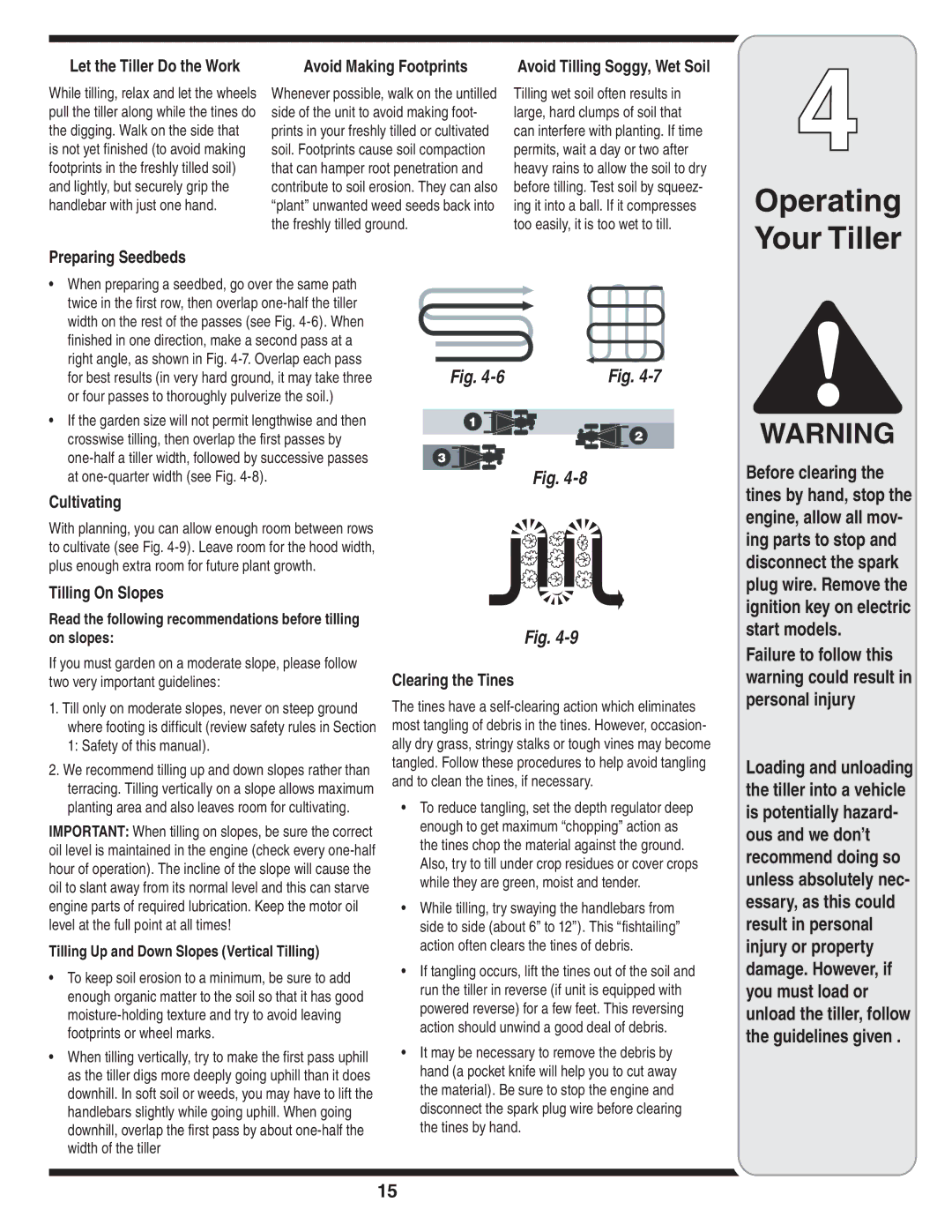643B, 643C, 645A specifications
The Bolens 645A, 643C, and 643B are celebrated models in the lineup of Bolens garden tractors, known for their durability and versatility. These machines, produced during the 1970s and 1980s, are vintage favorites for homeowners and garden enthusiasts seeking rugged equipment for their gardening needs.The Bolens 645A is especially noted for its robust build and powerful performance. Equipped with a 7-horsepower engine, the 645A can tackle a variety of tasks, from mowing to snow removal, making it a multipurpose tool in any garden or landscape. One of the main features of the 645A is its hydrostatic transmission, which allows for seamless speed adjustments, providing exceptional maneuverability in tight spaces and varied terrain.
Similarly, the Bolens 643C and 643B models boast impressive features and capabilities. The 643C is renowned for its compact yet powerful 6-horsepower engine. It includes a gear-driven transmission, which offers reliable power transfer and increased efficiency while operating under demanding conditions. The steady performance of the 643C makes it ideal for smaller properties, where precision and control are paramount.
The 643B, while slightly less powerful than its sibling, still holds its own with a solid 5-horsepower engine. It is particularly favored for its ease of use and relatively low maintenance requirements, making it a perfect choice for casual gardeners or those new to the world of garden tractors. Its straightforward controls and simple mechanisms ensure that users can quickly learn to operate it proficiently.
All three models are engineered with a focus on user comfort. The seating is designed ergonomically, allowing users to operate for extended periods without discomfort. Additionally, the accessibility for maintenance tasks is a notable characteristic, ensuring that both professional and amateur gardeners can perform regular upkeep with ease.
In terms of technology, these models utilize straightforward mechanical designs with minimal electronic components, which reduces the likelihood of breakdowns and simplifies repairs. The rugged construction of the chassis and attachments demonstrates Bolens' commitment to longevity and resilience, making these tractors a solid investment for any gardening enthusiast.
In summary, the Bolens 645A, 643C, and 643B models stand out in the garden tractor market due to their powerful engines, user-friendly designs, and robust construction. They represent a blend of efficiency and reliability, catering to a wide range of gardening tasks and maintaining a loyal following among vintage equipment enthusiasts.

